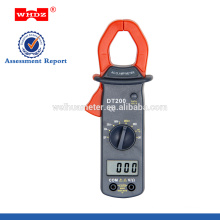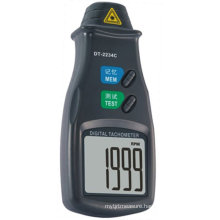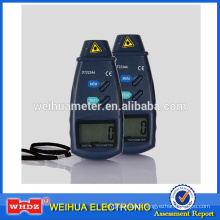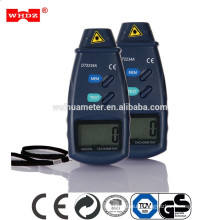The key component of automatic robot operation - Panasonic 3D laser radar distance sensor
2021-04-25

According to the James Consulting, Panasonic (Panasonic) recently announced the development of a 3D (3D) LiDAR (Lidar) distance sensor, which can accurately measure the distance and direction of surrounding objects from a wide viewing angle, and is a key component of automatic robot operation. . The 3D LiDAR uses Panasonic's unique laser scanning technology to achieve wide-angle scanning of 60 degrees in the vertical direction and 270 degrees in the horizontal direction, which provides a guarantee for the stable operation of the automatic robot. Panasonic will showcase this 3D LiDAR at CEATEC JAPAN 2017, which will be held from October 3rd to 6th, 2017. According to Mamms Consulting, this wide-angle 3D LiDAR accurately detects obstacles on the road and the undulations of the road. In addition, you can precisely adjust the scanning angle and resolution of the 3D LiDAR by adjusting the rotation angle and speed of the mirror in the system. Therefore, the user can select an appropriate detection state accurately and flexibly according to the application scenario. This will promote the widespread use of automatic robots in indoor and outdoor environments where obstacles surround and people come and go. Features of this wide viewing angle 3D LiDAR: - 3D distance and direction detection with wide viewing angle, 60 degrees in the vertical direction and 270 degrees in the horizontal direction; - Any setting for vertical scanning angle and resolution; - Even in strong High-precision detection is also possible in a sunshine environment.
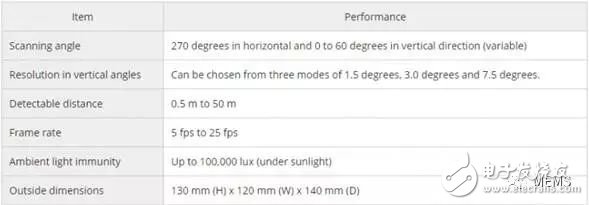
The basic parameters of Panasonic 3D LiDAR automatic robots need to be able to detect the surrounding ground environment and obstacles in stable operation in indoor and outdoor environments where obstacles surround and people come and go. Traditional LiDAR designed for autonomous vehicles cannot scan in a wide range in the vertical direction. Therefore, they cannot accurately detect road conditions. To this end, traditional LiDAR needs to be combined with other sensors to detect road conditions, making the architecture and design of robots very complex.
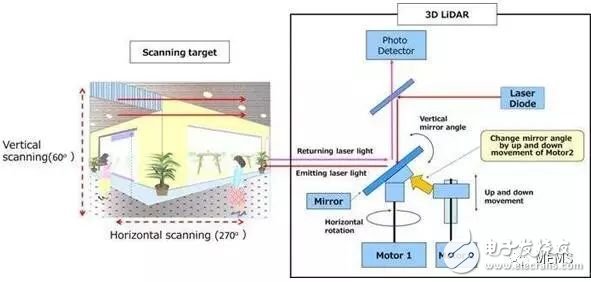
The structure of the Panasonic 3D LiDAR laser scanning system has a wide viewing angle: 60 degrees in the vertical direction and 270 degrees in the horizontal direction. The existing LiDAR Sensor cannot detect the obstacles around the wide viewing angle, especially in the vertical direction. Panasonic's laser scanning technology uses its unique optical system design and mirror motor control technology developed in large-scale production of optical disc drives. The 3D LiDAR uses a laser and motion mirror for detection. The mirror is moved in two different directions by two drive motors. The single-light path design and the wide angle of the mirror movement achieve a wide angle of view of 60 degrees in the vertical direction and 270 degrees in the horizontal direction. This 3D LiDAR simplifies the detection system of automated robots by eliminating the need for any additional sensors to detect obstacles and road conditions. Arbitrary setting of vertical viewing angle and resolution
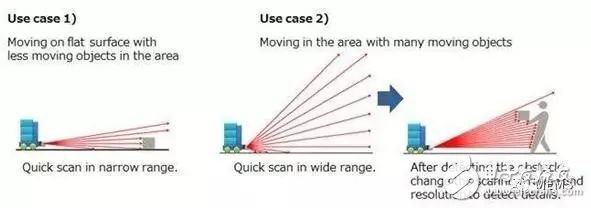
Panasonic 3D LiDAR Laser Scanning Cases Automated robots often need to operate in specific areas to detect obstacles around them. For example, when they are operating in areas that are very flat and have few obstacles, they do not require very accurate detection of undulations or obstacles around the road. The obstacle detection sensor can be adjusted according to the operating speed of the robot to perform relatively high-speed detection scanning. On the other hand, when the robot is traveling in a region where people come and go or have many obstacles, it requires the precise perception of wide viewing angle. In addition, 3D LiDAR requires detailed detection of the surface of the obstacle being measured. Panasonic's newly developed 3D LiDAR benefits from its unique laser scanning technology, making it easy to adjust the detection settings. According to the operating environment of the robot, selecting the most suitable detection settings allows the robot to obtain the most stable and efficient operation. Accurate detection under strong sunlight In an intense daylight environment, automated robots also need to accurately detect obstacles. Panasonic successfully reduces the noise caused by sunlight by making the reflected light and the emitted light in the same optical path. Its newly developed 3D LiDAR can also achieve accurate detection under the illumination of 100,000 lux in midsummer.

Probing sample under strong sunlight
Laser range sensors combine the advantages of a visible red sensing beam with the increased range of a laser. The optical distance sensor devices are Class 2 lasers, support Class 1 customized. The high precision autonics distance sensor is successfully be used to connect to Arduino, Raspberry Pi, with +-1mm to 3mm high accuray, and long-range solutions (max up to 150m) for your application.
Precision Distance Sensor, Precision Laser Distance Sensor, Precision Distance Sensor Laser, Accurate Laser Distance Sensor
Metal Detector, Multimeter Co., Lt d http://www.rangesensors.com


